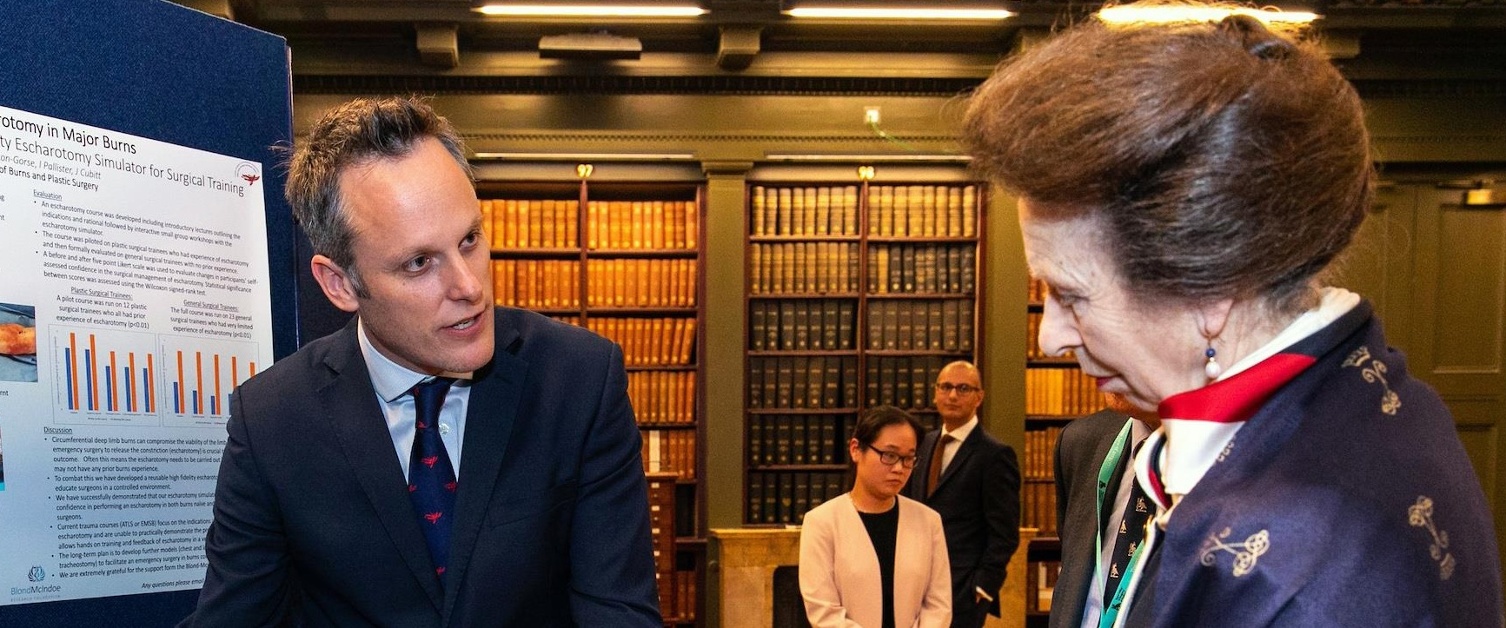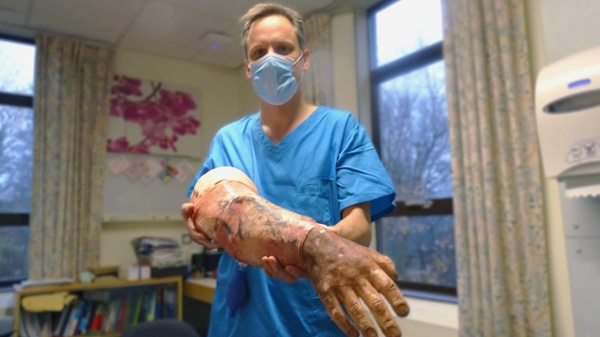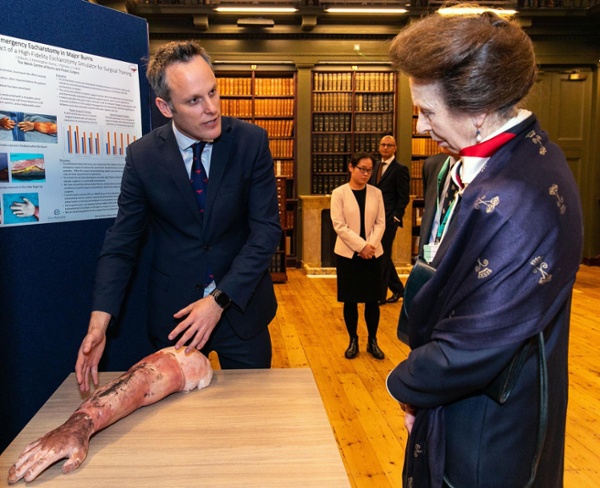Morriston burns team gives surgeons a helping hand with emergency training

Surgeons around the UK could be getting hands-on training for a life and limb-saving emergency procedure using a simulator created in Swansea.
A team at Morriston Hospital has created a realistic silicone arm to teach a procedure called an emergency escharotomy.
 Severe injuries such as a deep burn to a limb can cause tissue to swell to the point where blood cannot easily flow past the injury.
Severe injuries such as a deep burn to a limb can cause tissue to swell to the point where blood cannot easily flow past the injury.
Consultant surgeon Jonathan Cubitt with the training arm
The skin acts like a tight bandage, preventing the area around the injury from expanding to accommodate the swelling.
This tourniquet-like effect leads to the compression of the blood vessels, muscle, tissues and nerves below.
It’s known as compartment syndrome, requiring an emergency escharotomy – cutting into the skin and the tissues beneath, allowing them to spread open to relieve this build-up of pressure.
Because time is critical, the procedure sometimes has to be carried out before the patient can be transferred to a hospital with burns facilities, by surgeons who may not have had previous escharotomy experience.
The idea for the simulator came from a team of consultants in Morriston Hospital including consultant burns, plastic and reconstructive surgeon Jonathan Cubitt.
“The aim is to improve the knowledge of general surgeons who may be working in a peripheral hospital and might have to do this procedure when a patient comes in,” he said.
“It’s a procedure that can save lives and limbs but traditionally it has not been particularly well taught.
“Current trauma courses focus on the indications and theory of escharotomy but without being able to demonstrate the procedure in practical terms.
“You can draw pictures and show where you cut but most general surgeons will not get the hands-on operating theatre experience you need to know how to do it properly.
 “What we have done is create a very high-fidelity training simulator to improve the skills of non-plastic surgeons so they can carry out this procedure with confidence.”
“What we have done is create a very high-fidelity training simulator to improve the skills of non-plastic surgeons so they can carry out this procedure with confidence.”
Mr Cubitt (centre) with his Morriston colleagues Ian Pallister and Sarah Hemington-Gorse
Through the Royal College of Surgeons, Mr Cubitt successfully applied for a grant from the Blond McIndoe Research Foundation (BMRF).
This UK-based charity funds ground-breaking research, nationally and globally, into techniques and technologies that will repair, restore and regenerate tissue and reduce debilitating scarring.
To develop the training arm, Mr Cubitt worked with Morriston Hospital colleagues including burns and plastics consultant Sarah Hemington-Gorse and trauma consultant Ian Pallister, who has previously created a number of realistic injury simulators.
“It has a reusable inner arm with skeleton, fat and muscle, along with air bladders to help simulate the pressure change when you cut it, and a replaceable sleeve,” said Mr Cubitt.
“You can cut through this sleeve down to the fat to simulate the operation and it is really realistic.”
The simulator also features a fingertip that turns pink to demonstrate reperfusion – the restoration of blood flow.
Mr Cubitt and his colleagues have since held workshops into the feasibility of a comprehensive education package to teach upper limb escharotomy.
 It involved 34 plastic and non-plastic surgeons, and an evaluation showed there was increase in confidence in performing an escharotomy.
It involved 34 plastic and non-plastic surgeons, and an evaluation showed there was increase in confidence in performing an escharotomy.
“Looking forward we aim to develop further models for lower limb and chest escharotomy and possibly even tracheostomy so that we would be able to run a comprehensive emergency burns surgery course.” said Mr Cubitt.
“Our aim is to improve emergency burns care education in the UK and globally.”
Mr Cubitt was invited to a BMRF event in London to highlight the innovative research being carried out with the foundation’s support.
He had the opportunity to explain the training simulator to guests including the BMRF’s Royal Patron, the Princess Royal (see photo).
“She was very interested in our simulator and interested in the possible global implications for training and improving emergency burns care,” said Mr Cubitt.
Rydym yn croesawu gohebiaeth a galwadau ffôn yn y Gymraeg neu'r Saesneg. Atebir gohebiaeth Gymraeg yn y Gymraeg, ac ni fydd hyn yn arwain at oedi. Mae’r dudalen hon ar gael yn Gymraeg drwy bwyso’r botwm ar y dde ar frig y dudalen.
We welcome correspondence and telephone calls in Welsh or English. Welsh language correspondence will be replied to in Welsh, and this will not lead to a delay. This page is available in Welsh by clicking ‘Cymraeg’ at the top right of this page.